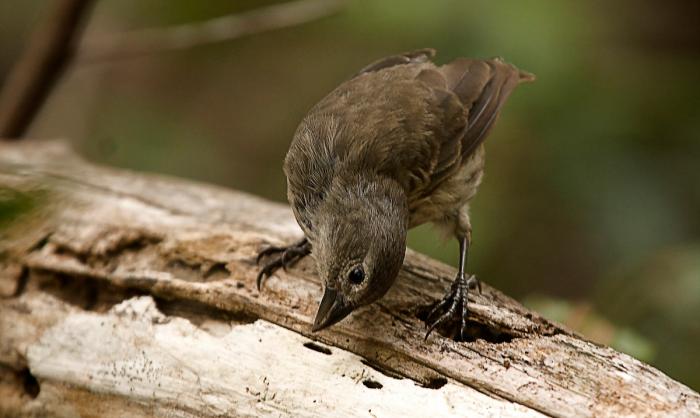
"In the past, the mangrove finch lived throughout the coastal mangrove forests of the two Western Islands of Galapagos archipelago. But by the 1990s, the species had disappeared everywhere except for three tiny sites on Isabela Island, where today at just two of those sites, approximately 100 individuals live, including fewer than 20 breeding pairs. The current decline of the species is due to invasive flies whose larvae parasitise the chicks in the nest. Also, rats came to the Galapagos aboard merchant ships and if uncontrolled predate nests. In addition, geological changes in the landscape may have had an impact and looking forward climate change is predicted to further place the mangrove finch at risk.”
"The mangrove finch, which feeds on, insects, spiders and occasionally native fruits, lives in the mangrove trees and nests high in the canopy in hard-to-reach places. This also makes it difficult to eliminate the fly larvae that cause high mortality of the chicks.”
"We have hand reared mangrove finch chicks away from the parasites and released them back into the wild. However, survival of hand reared birds is low. If we are to ensure the survival of the species in the wild, there is a particular need for even better rat control and effective control of the introduced avian vampire fly. At the same time, we must protect the mangrove habitat on which the birds depend.”
Francesca Cunninghame, Mangrove Finch Project Leader, Charles Darwin Foundation